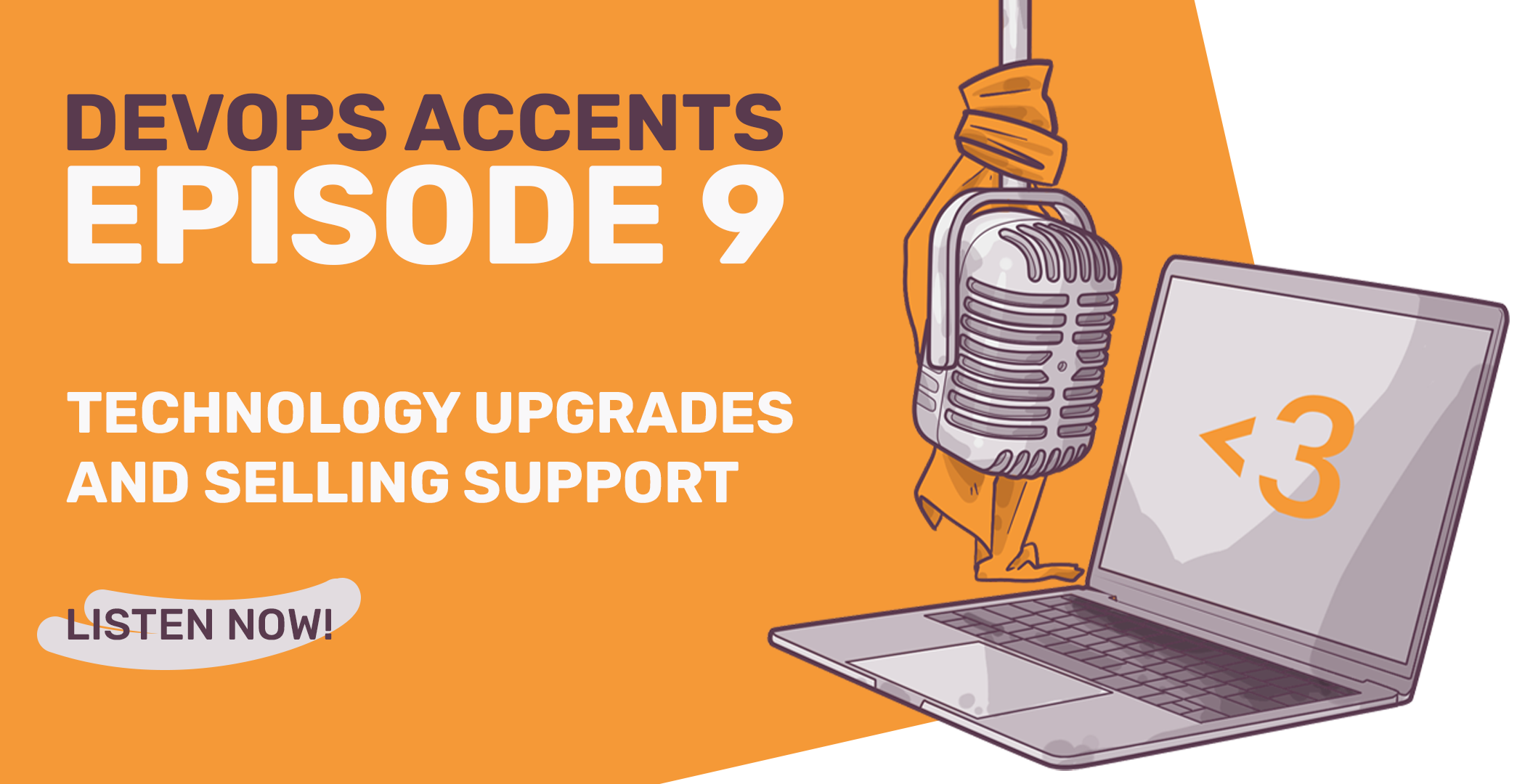Technology Upgrades and Selling Support |🎙️#9


In this episode of DevOps Accents, Leo, Pablo and Kirill talk about the weirdness of selling a product that will need upgrades and support and why we usually don't get things that last forever.
- Scientific approach in choosing technologies;
- Do companies have our best interest in mind releasing new versions of their products?
- CAPITALISM!
- Products backwards compatibility;
- Products longevity: the AWS way vs. the Google way;
- Selling big complicated solutions and the demand for simple ones.
You can listen to episode 9 of DevOps Accents on Spotify, or right now:
In the rapidly evolving world of DevOps and cloud computing, the conversation often swirls around the adoption of new technologies versus the continued use of older, perhaps outdated, methods. This debate touches on the core of how businesses and technology professionals navigate the balance between innovation, security, and operational efficiency. Here, we explore insights from industry experts on navigating the complex landscape of cloud technologies, the implications of adopting new versus old tech, and the nuances of making these critical decisions in the realm of DevOps.
The Balance Between Innovation and Tradition
The tech industry, particularly in the domains of cloud computing and DevOps, is characterized by rapid evolution. New technologies emerge, promising enhanced efficiency, security, and cost-effectiveness. However, the adoption of these technologies is not always straightforward. Businesses often grapple with the decision to move forward with new tech or stick with older, more familiar systems. This decision-making process is influenced by various factors, including personal beliefs, budget constraints, and the potential risks associated with using outdated technologies.
The Security Imperative
One of the most compelling arguments for adopting newer technologies is the aspect of security. The infamous Log4j vulnerability highlighted the critical importance of keeping software up to date to mitigate security risks. Upgrading to newer versions of software and operating systems is often seen as a necessary step to protect against vulnerabilities and ensure the integrity of IT environments.
The Cost of Upgrading
While the push towards newer technologies is often justified by the need for improved security and performance, it also comes with its own set of challenges. Upgrading systems can be a costly endeavor, both in terms of direct expenses and the potential for operational disruptions. Furthermore, companies like Apple have been criticized for practices that some perceive as forcing consumers to upgrade to newer models of their devices, despite older models still being capable of functioning adequately. This has sparked debate about whether such strategies are driven by genuine concern for user experience and security or by a desire to drive sales.
The Cloud Complexity Conundrum
The cloud computing landscape exemplifies the complexity of technology adoption. With a plethora of services and tools available, businesses and developers find themselves navigating a maze of options to find the most suitable solutions for their needs. The abundance of choice, while offering flexibility, also introduces complexity in decision-making and integration. This complexity can lead to challenges in maintaining and upgrading systems, necessitating expert knowledge and, often, external support.
Simplification Versus Customization
The debate extends into the philosophy of technology infrastructure design. On one hand, there is a call for simplification – the desire for "one solution that does it all" to minimize complexity and ease the burden on developers and businesses. On the other hand, the reality of diverse business needs and the rapid pace of technological advancement make customization and the use of a variety of tools a necessity for many.
Towards a Balanced Approach
In navigating the dynamic landscape of cloud technologies and DevOps, a balanced approach that considers the specific needs and contexts of businesses is essential. While newer technologies offer advantages in security, efficiency, and features, the decision to upgrade should be weighed against the costs, potential disruptions, and the unique requirements of each organization. Ultimately, the goal should be to foster environments that are secure, efficient, and capable of evolving with the changing technology landscape, whether that means adopting the latest innovations or optimizing existing systems.
The conversation around technology adoption in DevOps and cloud computing is far from settled. As businesses and technology professionals continue to navigate these choices, the focus should remain on creating value, ensuring security, and fostering innovation, all while keeping an eye on the broader implications of these decisions.
Podcast editing: Mila Jones, milajonesproduction@gmail.com
